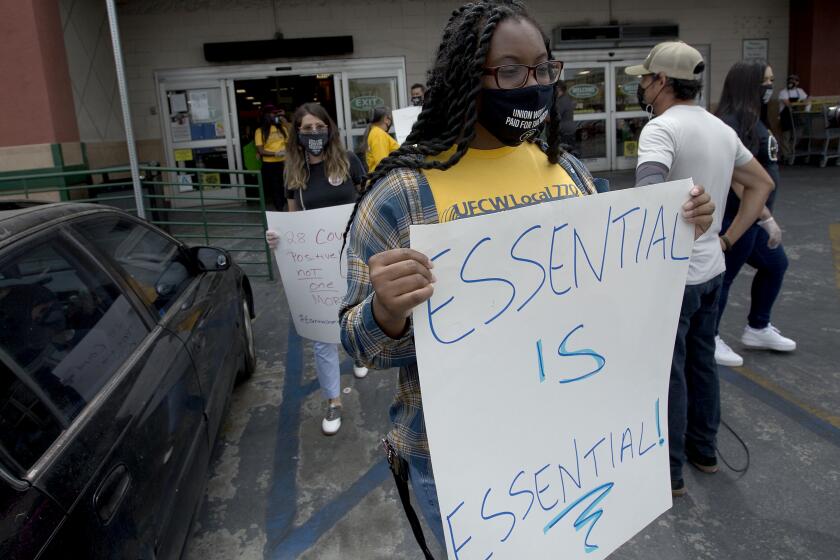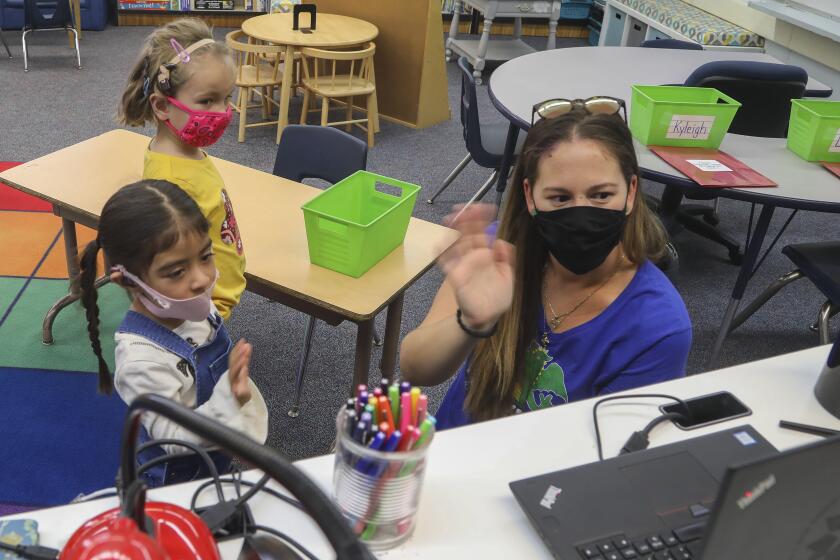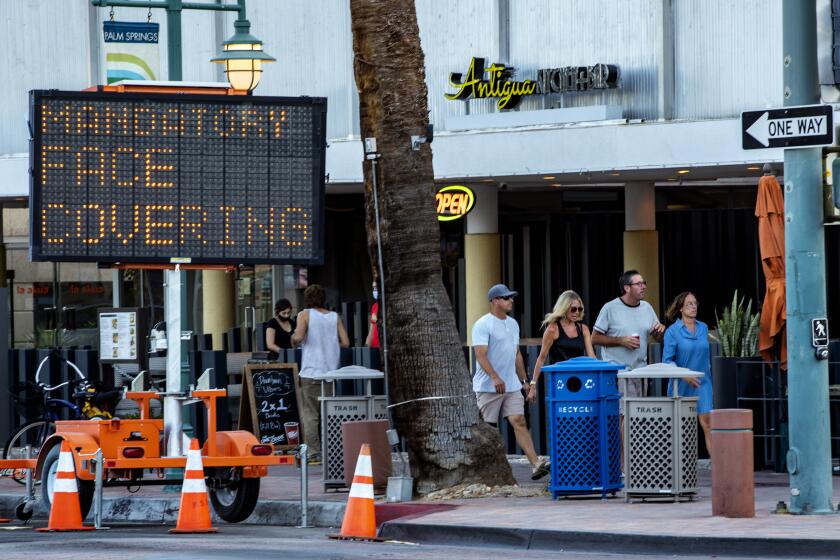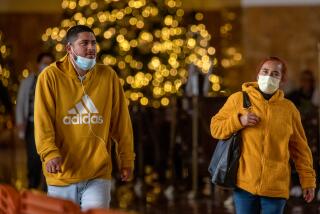Backlog in reporting of test results swells coronavirus case count in L.A. County
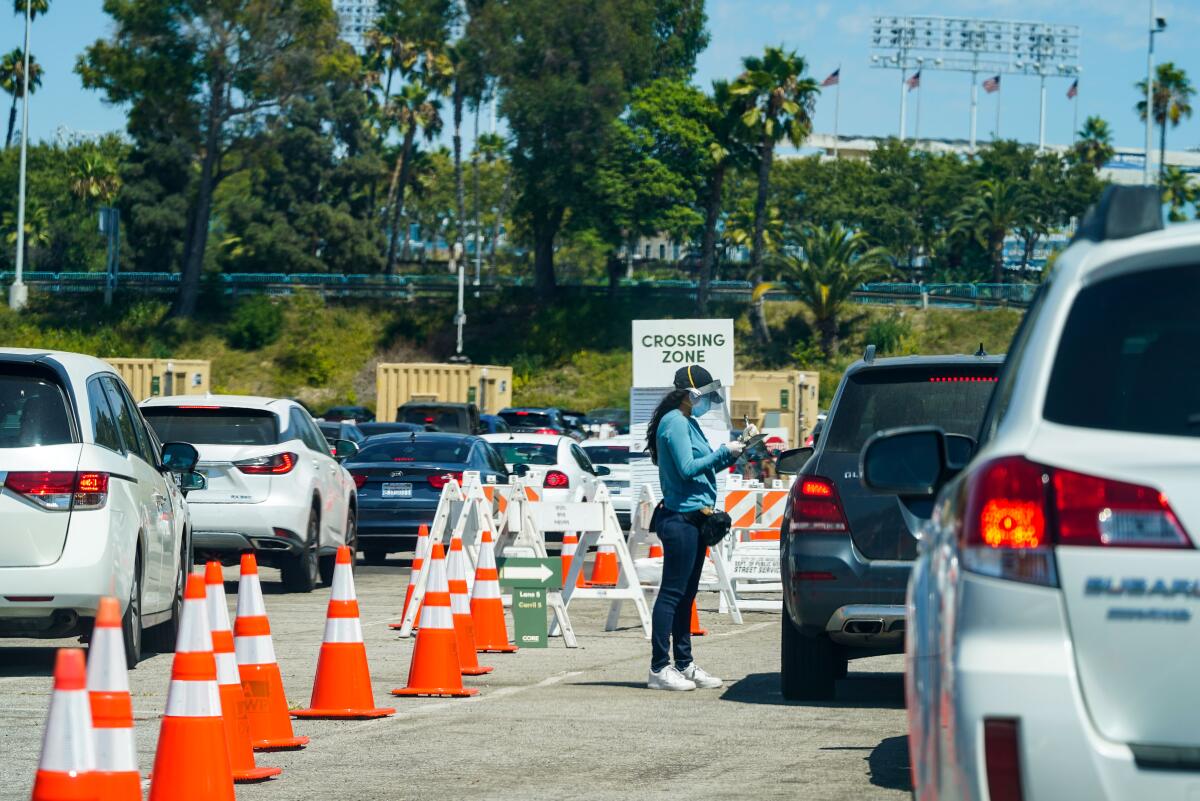
The number of confirmed coronavirus infections in Los Angeles County swelled significantly this week â the result, officials said, of a sizable backlog in the reporting of test results because of technical glitches.
The full extent of the problem and how much it will affect the countyâs COVID-19 case counts remain to be seen. Public health officials said Thursday that theyâve addressed the issues, though they expect to receive more accumulated results in the coming days.
Of the 3,600 new cases reported in the county Thursday, officials said roughly 2,000 were from the backlog. County public health officials confirmed 2,773 new cases on Friday, with those higher numbers also being attributed to the backlog.
In a statement to The Times, the county Department of Public Health cited âprocessing issues in the stateâs reporting system that resulted in a large volume of duplicate records being sent to L.A. County.â
But officials added that the pandemic has presented a significant challenge by requiring âa real-time build out of reportable disease surveillance systemsâ that can handle an enormous amount of data.
L.A. Countyâs backlog alone accounts for almost one-third of all the new coronavirus cases reported statewide Thursday. The 1,600 or so non-backlogged cases are also the most the county has reported in a single day since Oct. 7.
State officials still scrambling to fix a database tracking coronavirus cases
Reporting issues have popped up periodically throughout the pandemic. The most significant snafu came to light in August, when state officials announced that a series of data failures had created a backlog of 250,000 to 300,000 test results in California.
While always essential, access to complete, trustworthy data is all the more vital now as California works to ward off the kinds of coronavirus surges that are striking many other states.
Already, more than 897,000COVID-19 cases have been confirmed in California â the most of any state â and about 17,300 people have died from the disease.
L.A. County alone accounts for more than 296,000 cases and is nearing 7,000 deaths.
Separate from the data issues, the county has also seen a slight uptick in its daily number of reported cases since mid-September, âand this is a cause for some worry,â Public Health Director Barbara Ferrer said earlier this week.
The latest data logjam comes as L.A. County is looking to relax some coronavirus-related restrictions to bring local rules in line with wider state guidelines.
The changes would eliminate a requirement that customers at wineries and breweries make reservations, remove the food service requirement for wineries, and allow family entertainment centers to reopen outdoor attractions such as go-kart tracks, miniature golf courses and batting cages.
State officials also announced this week that all personal care services â which include hair removal and massage and tattoo parlors â will now be allowed to resume modified indoor operations. However, individual counties still have the power to decide whether or not to allow that.
Officials also said that all L.A. County schools will be allowed to bring on campus up to 25% of their enrollment to serve students with special needs, especially those with disabilities or who are learning English.
Additionally, The Times has learned that officials have made it easier for elementary schools to reopen for their youngest students under waivers that drop a requirement that schools obtain a letter of support from employee unions as part of their applications.
County officials have made it easier for elementary schools to reopen for their youngest students under waivers, dropping a requirement to show union support.
L.A. County remains in Tier 1 of Californiaâs four-tier reopening plan â also known as the purple tier, which indicates widespread risk of community coronavirus transmission.
For counties in that category, many businesses and public facilities either cannot operate indoors or can do so only at a strictly limited capacity.
Counties are placed in the purple tier if they have more than seven new coronavirus cases per 100,000 people per day or a test positivity rate of more than 8%. As of now, L.A. Countyâs new case rate remains too high to move into a less restrictive tier.
Moving through the stateâs reopening tiers is a deliberative process by design. Counties must stay in a tier for at least three weeks before progressing and, to do so, must meet the next tierâs benchmarks for two straight weeks.
Counties can also backslide to a more restrictive tier if their metrics worsen for two consecutive weeks, as happened most recently with Riverside and Shasta counties.
California health officials will devote additional resources to curb coronavirus transmission rates in Riverside, L.A. and San Bernardino counties.
Dr. Mark Ghaly, secretary of the California Health and Human Services Agency, said officials had developed a âslow and stringentâ approach based on lessons from the first reopening â during which the state rapidly loosened restrictions, only to see coronavirus infections surge to new heights over the summer.
However, some county-level officials continue to take umbrage with what they see as an overly slow, one-size-fits-all strategy.
âThe top-down approach to mitigating COVID-19 from Sacramento is not working,â Michelle Steel, chairwoman of the Orange County Board of Supervisors, said during a news conference Thursday. âWhile most businesses have reopened, theyâre still operating in a limited capacity due to state mandates.â
Orange County is currently in Tier 2, called the red tier, which indicates substantial risk of community coronavirus spread.
Under new guidance the state unveiled this week, theme parks like Disneyland and Knottâs Berry Farm â among the countyâs largest employers â wonât be allowed to open even in a limited capacity until the county moves into a less restrictive tier.
The stateâs approach, Steel said, âis harming our residents who need work, small businesses and the communities that rely on them.â
âOrange County has not been the only county to express concern about this model,â she said. âWe want to work with the state on containing and eventually eliminating this virus, but this top-down approach with little communication isnât productive. Each local government has different issues affecting the spread of COVID-19.â
Disneyland, Knottâs Berry Farm and other large California theme parks wonât open immediately under protocols announced Tuesday.
Officials have repeatedly emphasized that a countyâs residents play a huge role in tamping case rates down to a level that will permit further lifting of restrictions.
âWhen we look at the widespread transmission occurring in L.A. County, we know that many people who become positive for COVID-19 are unaware they were exposed to an infected person,â Ferrer said in a statement Thursday. âI [ask] that you keep this in mind when you are out and about.â
While itâs not a given that residents will come into contact with someone who is infected, âWe do know with certainty that when people donât protect themselves and others â by wearing a face covering, washing hands often and staying at least six feet from others â this virus can quickly spread with devastating effects,â she said.
Times staff writers Rong-Gong Lin II, Howard Blume, Laura Newberry and Andrew J. Campa contributed to this report.
More to Read
Updates
5:05 p.m. Oct. 23, 2020: County public health officials confirmed there were 2,773 new cases on Friday with those higher numbers also being attributed to the backlog.
Sign up for Essential California
The most important California stories and recommendations in your inbox every morning.
You may occasionally receive promotional content from the Los Angeles Times.
